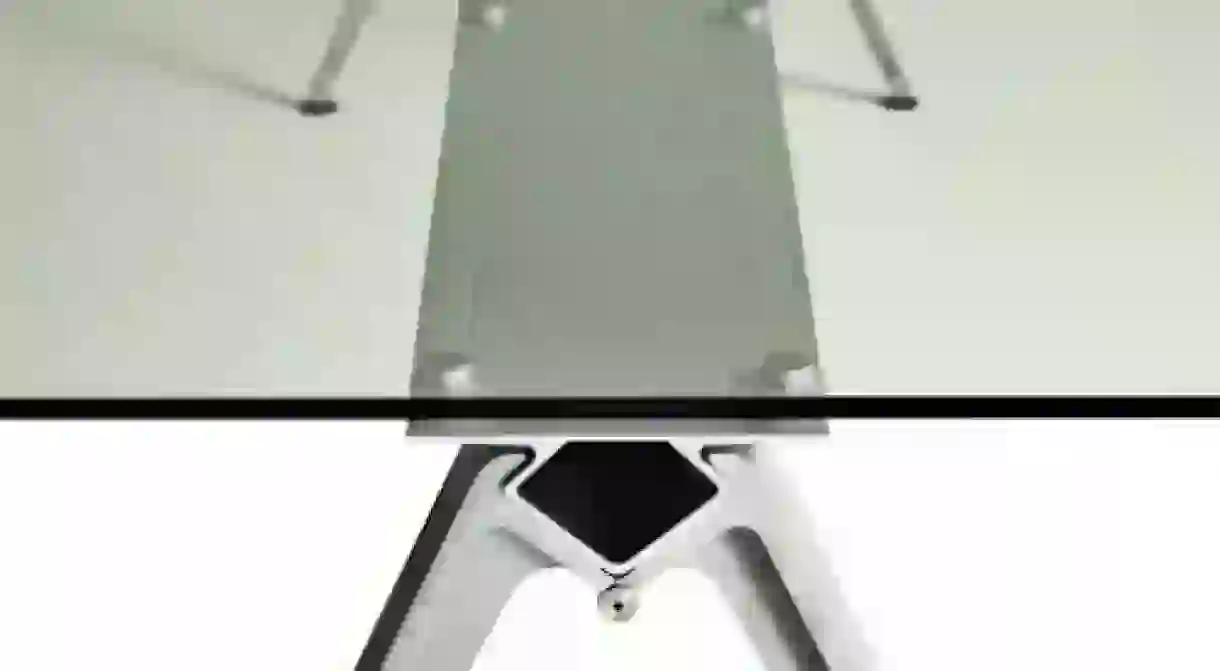Watch Out For Danish Design Phenomenon, GrumDesign

Danish designer Troels Grum-Schwensen does not reduce his creative approach to a work on spatial constraints — he pays attention to the social environment in which he projects his creations. Aiming at creating unique yet universal pieces, his sense of judgement and his attachment to practical realities does not lock his works into a mere artistic process, but gives them the chance to insert and blend fully into genuine home landscapes.

Could you start by telling us a bit about yourself?
I graduated from Royal Danish Academy of fine arts, School of Architecture in 1986. Today, I am an architect, interior designer and furniture designer.
How did your passion for design start?
I was good at drawing as a child and enjoyed shaping and building up objects manually. I was also very interested in zoology and the morphologic evolution of animal species. Over the years I spent at the architecture school, my interest and sensibility to design sharpened.
How would you define your aesthetic?
Holistic. The unity of shape, function, and technique are the basis of my aesthetic. For me, furniture design is much about the artistic interpretation of the construction. However, designing is not only a ‘sport of creation.’ The furniture should be light and mobile, yet it should also be strong, long-lasting and environment-friendly at the same time. The aesthetic should follow a substantial concern; it is not about trends, style or fashion.
As I am an architect, interior designer and furniture designer, creating highly adaptable furniture has always been a challenge.
What range of materials do you generally use? Do you have a favorite?
I always attempt to use the material which best fits the situation. As for furniture design, I have so far used wood, steel, aluminum, plastic, flexible polyurethane and others.

If you had to have only one designer’s work in your home, who would you choose and why?
In fact, most of my furniture is designed by me. Each piece is a one-off. If I wanted a new interior design by only one group of designers, I would think of Eames. Their production of furniture is so rich that you can always find suitable pieces — either beautiful or functional.
The GRIP table you designed for the AZ Award 2015 is an impressive modern piece. How did you come up with this idea?
For decades I have worked intensively and creatively on the role played by gravity in the assembling process. Some of [the] pieces can assemble without any tools. On this basis, I started designing an aluminum bench in 2004. The prototype was a guideline towards the creation of more conceptual furniture-design items. I worked for 4-5 years on the GRIP table before it was released by Randers+Radius in 2011. Many variations of the prototype were designed as simple drawings or mock-ups before I choose the final shape.
How do you fuel your inspiration?
The best thing is to concentrate on a problem and then switch to something completely different. I enjoy going kayaking, for example. In spite of being a sport and a nature experience, kayaking is for me a kind of meditation. It allows me to let my thoughts go beyond control. This can be very stimulating to get ideas. To my mind, nature and biology will always be creativity boosters, but I sometimes just find inspiration while walking or dozing off.
How would you describe the job of a home designer in 2016? What are the new challenges?
His designs must be environment-friendly, long-lasting, and his role is to solve some real problems, whether huge or small. I’m thinking about designing furniture for very small city apartments or for people who often move, for instance.

What can you tell us about the evolution of aesthetics in home design?
Too much trend and fashion, for the time being — at least, in Denmark.
According to your philosophy, do you think that furniture design should be more functional or rather beautiful?
Always both.
Could you tell us about the new Danish design trends of 2016?
Too much trend and fashion, for the time being.
What piece of advice would you give to those who want to start a career in design?
Keep on working. Stay steady and be faithful to your own thoughts and philosophy. If you haven’t got one, think about real, substantial problems in the world. Do not go for trends or smartness.
Where would you advise art and design lovers to go in Denmark?
Louisiana, and Trapholt; Designmuseum Denmark.
Is there a country you’d like to visit specifically for its design scene?


GrumDesign is one of the winners of The Culture Trip’s Denmark Local Favorite 2015 Award. The Local Favorite badge is awarded to our favorite local towns, restaurants, artists, galleries, and everything in between. We are passionate about showcasing popular local talents on a global scale, so we have cultivated a carefully selected, but growing community.













